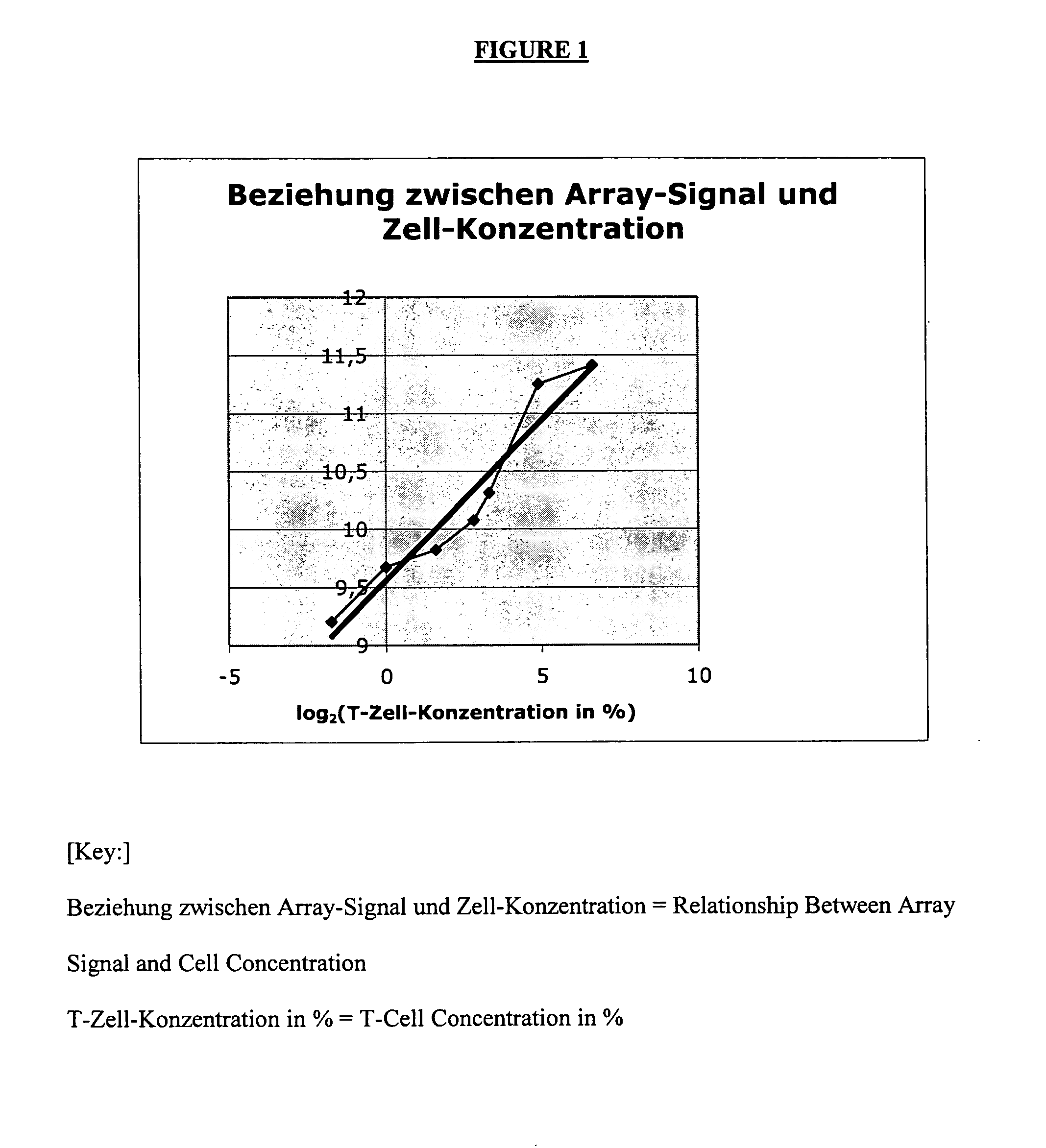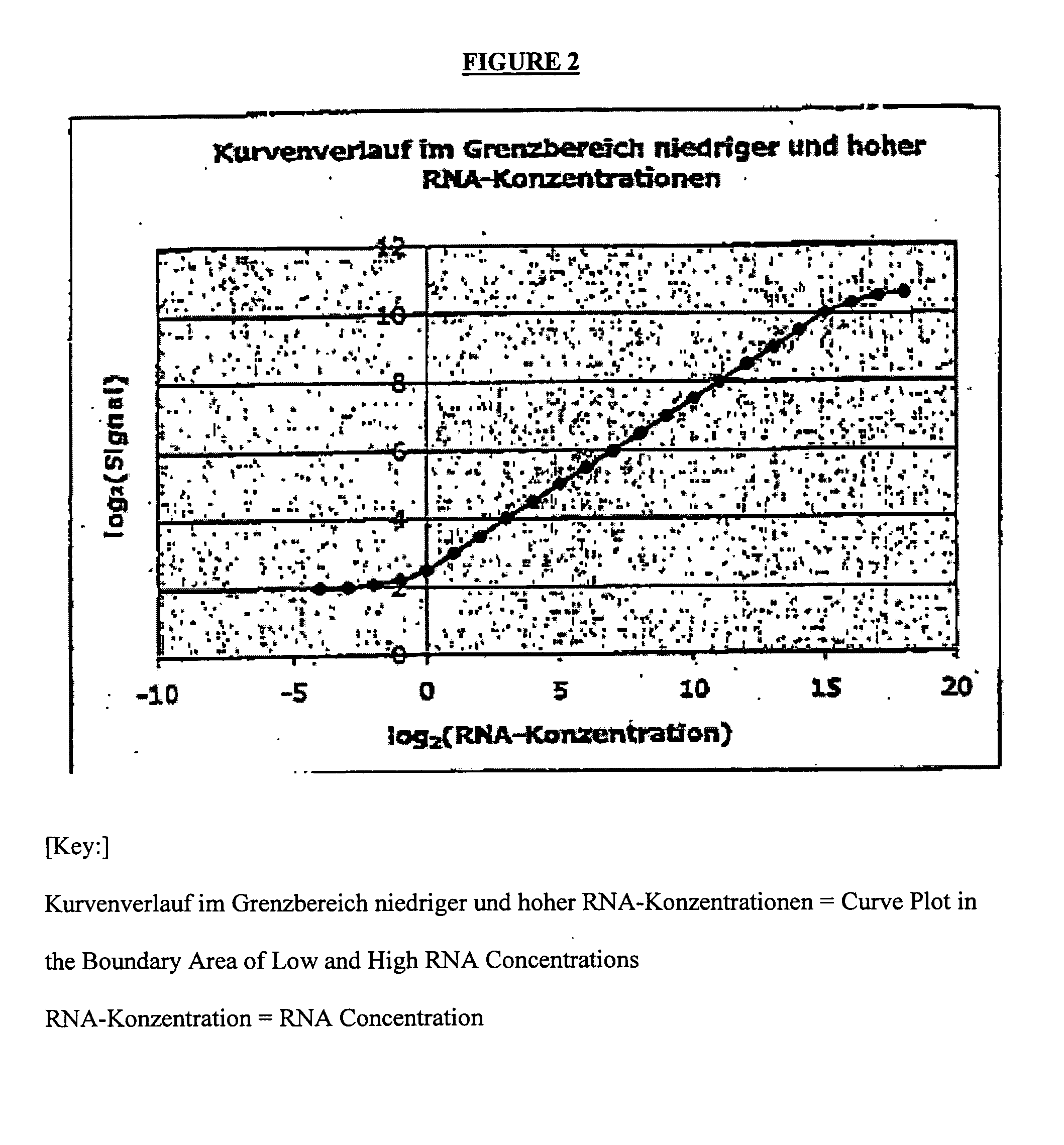Process for Recognizing Signatures in Complex Gene Expression Profiles
a gene expression profile and signature recognition technology, applied in chemical libraries, hybrid computing, combinational chemistry, etc., can solve the problems of artificial changes in gene expression patterns, limited interpretation of array data, and inability to distinguish between the two current bioinformatic analysis methods
- Summary
- Abstract
- Description
- Claims
- Application Information
AI Technical Summary
Benefits of technology
Problems solved by technology
Method used
Image
Examples
Embodiment Construction
Background
[0076]The following two different backgrounds may be present:[0077]1.) A cell type (effect to be measured) may be completely lacking in the control sample. In the sample, cells (or effects) that are different and important to the disease are found only in the altered (diseased) state. Example: Synovial tissue in the normal state k has an infiltrate that consists of T cells, monocytes, etc. Only by inflammatory processes do these cells pass into the tissue and experience further activation there.[0078]2.) In contrast, even in the normal situation, a mixture that consists of various cell types (or effects) can already exist. Thus, e.g., the blood from various cells, which undergo variations in the normal state, is assembled. In the case of diseases, these variations can be very strongly pronounced. They are not disease-specific but can possibly obscure the gene regulations that are typical of a disease.
Settings of the Software That is Used
Identification of Marker Genes
[0079]...
PUM
| Property | Measurement | Unit |
|---|---|---|
| mass spectrometry | aaaaa | aaaaa |
| quantitative composition | aaaaa | aaaaa |
| cellular composition | aaaaa | aaaaa |
Abstract
Description
Claims
Application Information
 Login to View More
Login to View More - R&D
- Intellectual Property
- Life Sciences
- Materials
- Tech Scout
- Unparalleled Data Quality
- Higher Quality Content
- 60% Fewer Hallucinations
Browse by: Latest US Patents, China's latest patents, Technical Efficacy Thesaurus, Application Domain, Technology Topic, Popular Technical Reports.
© 2025 PatSnap. All rights reserved.Legal|Privacy policy|Modern Slavery Act Transparency Statement|Sitemap|About US| Contact US: help@patsnap.com



